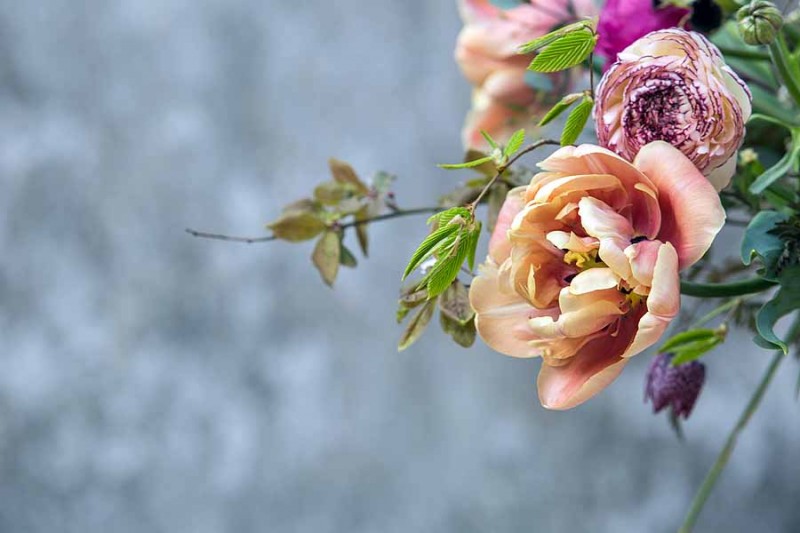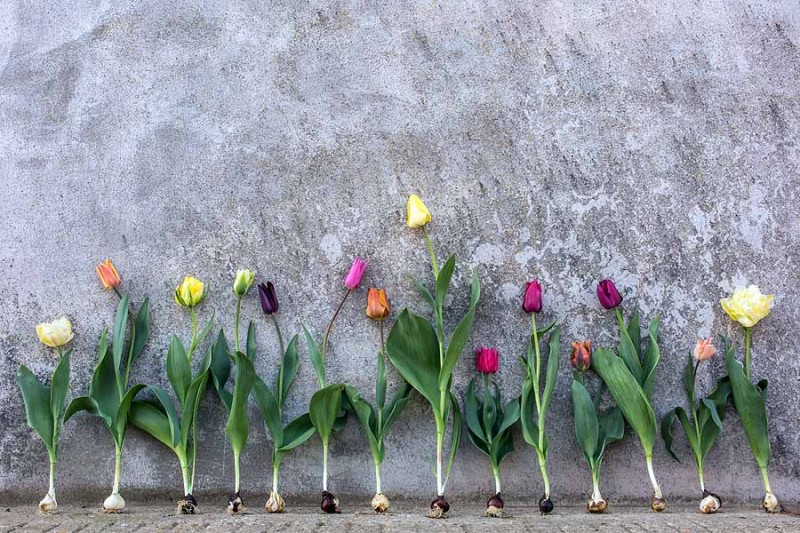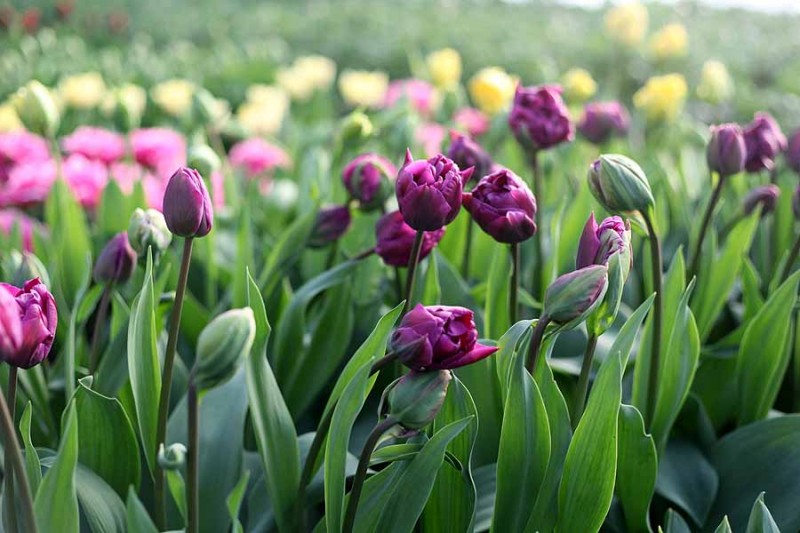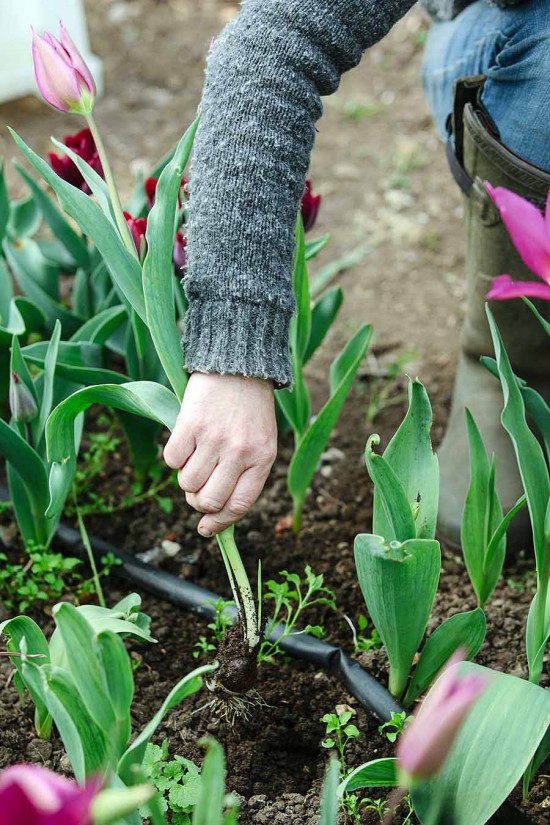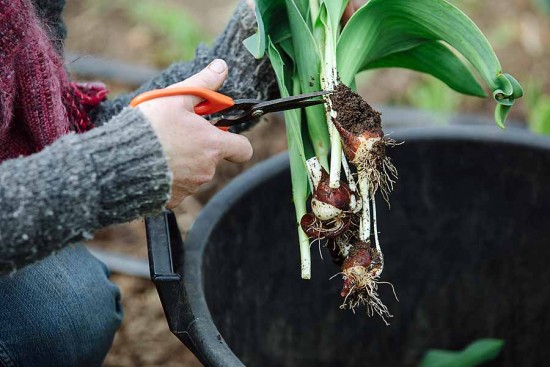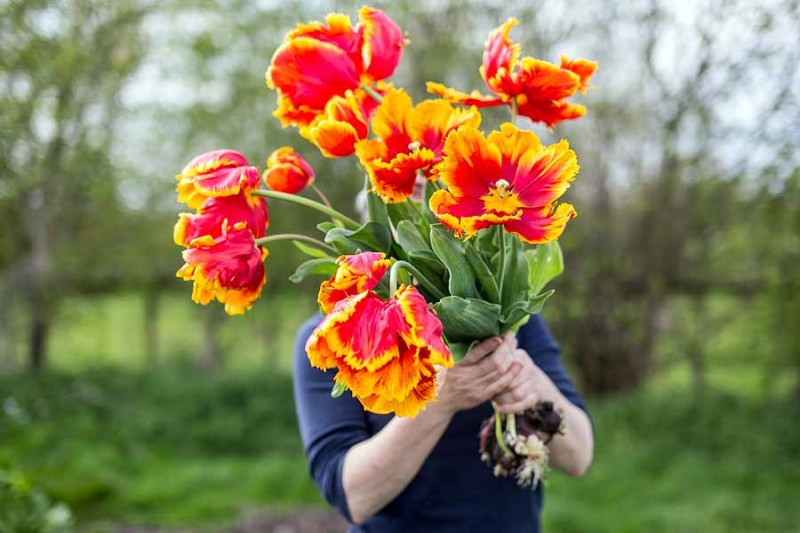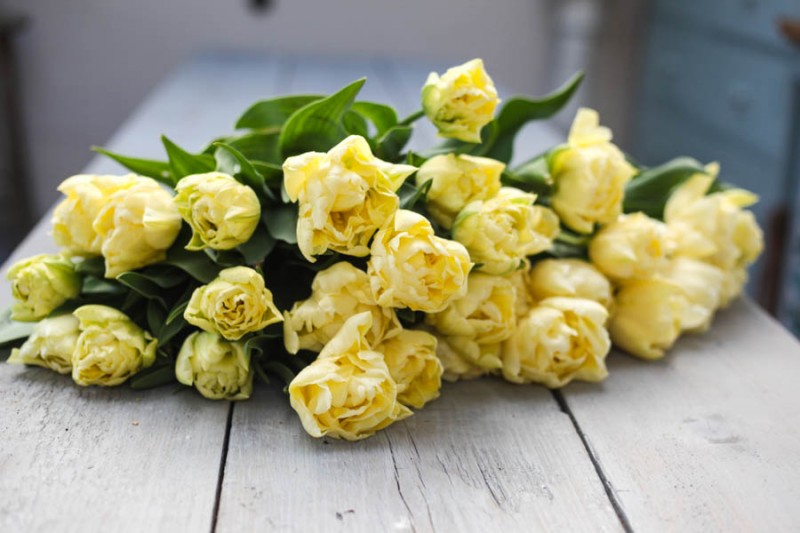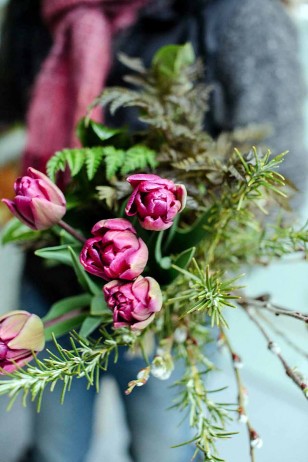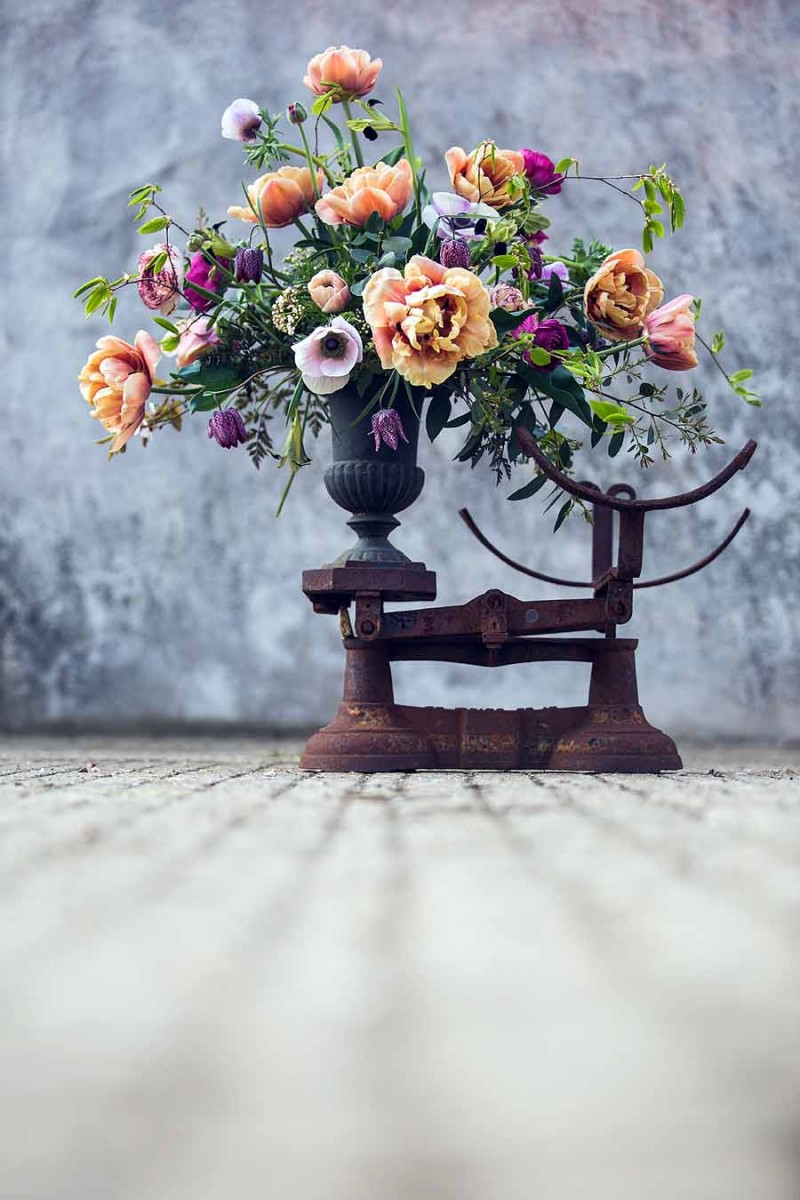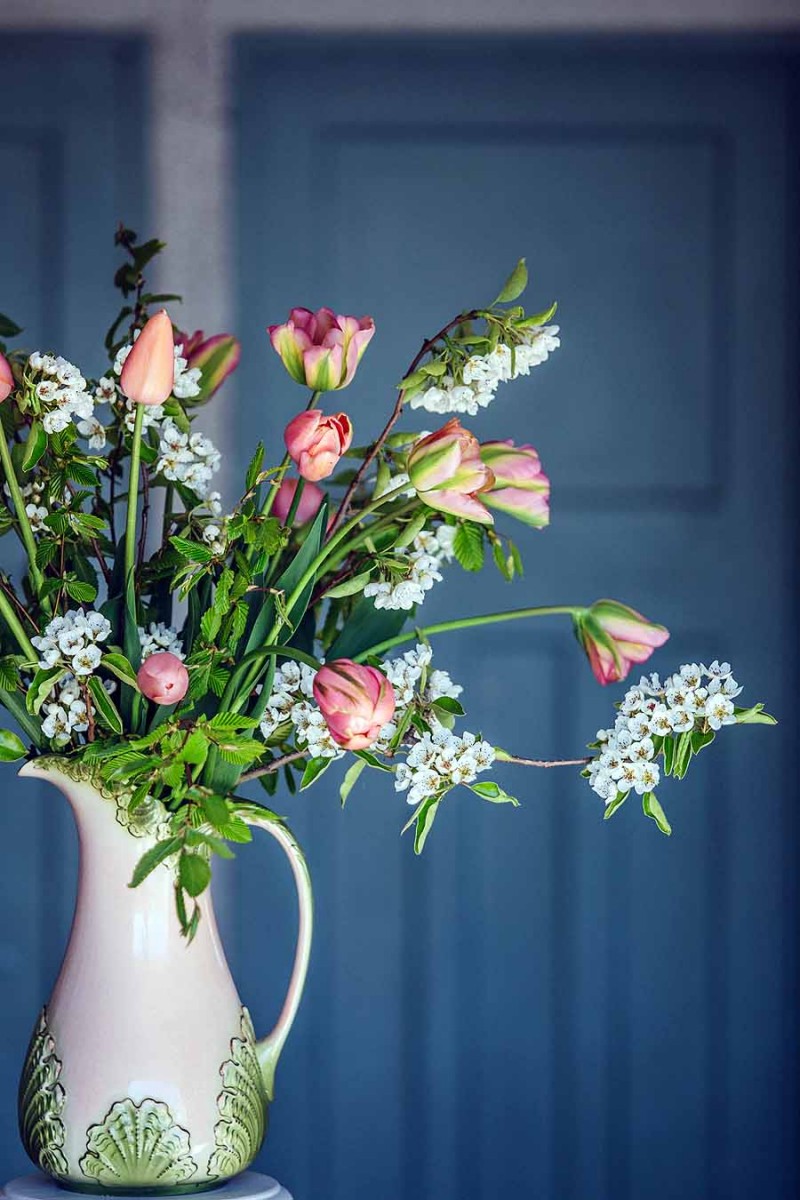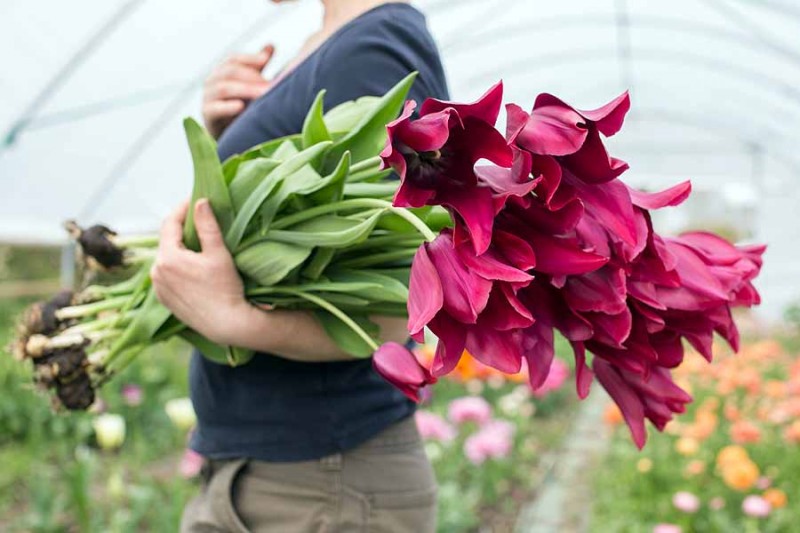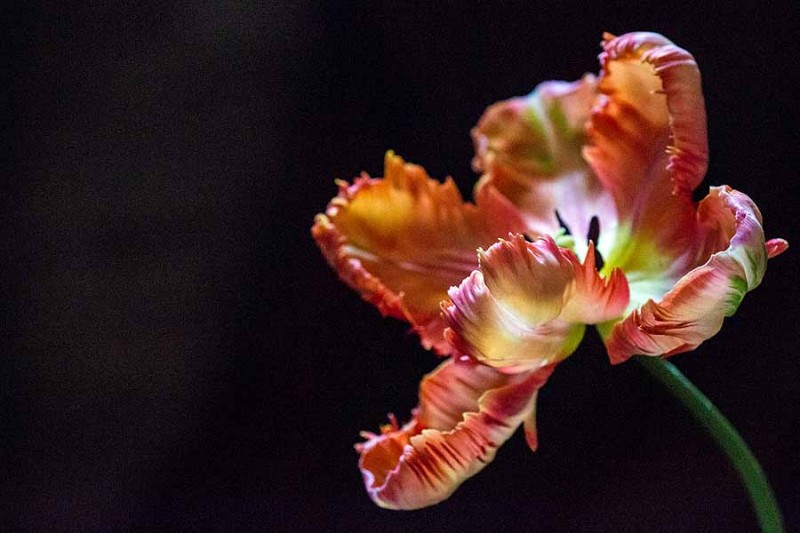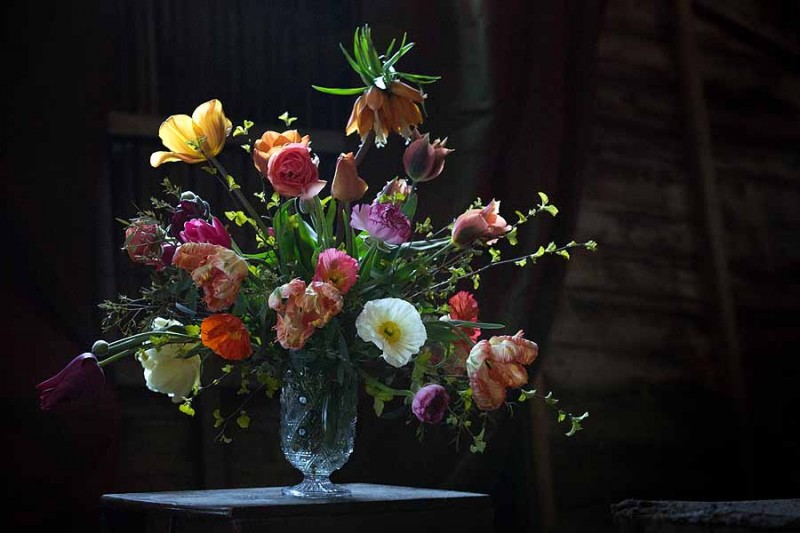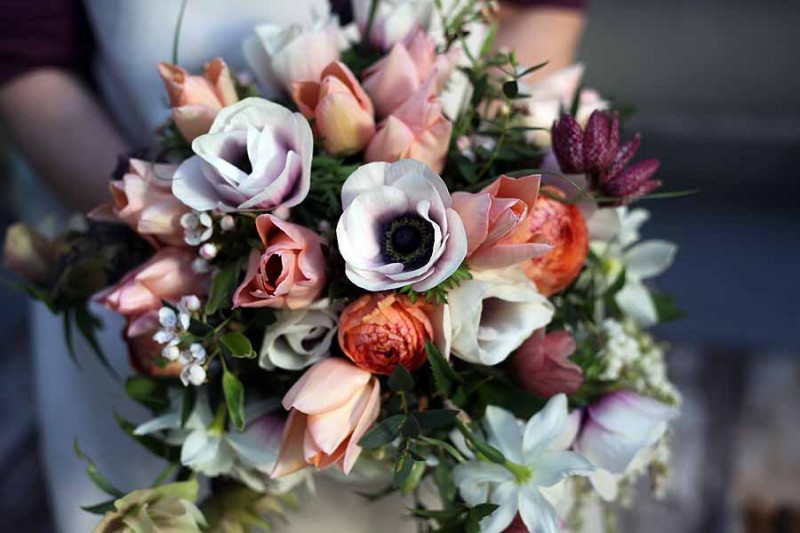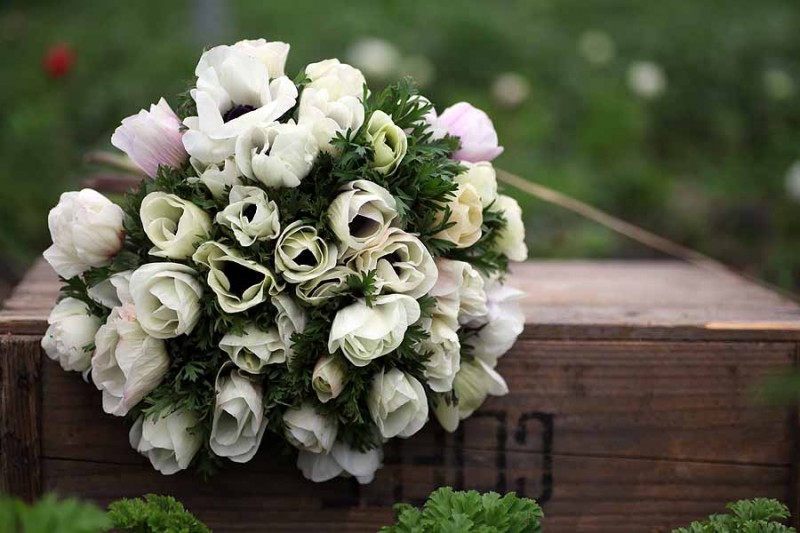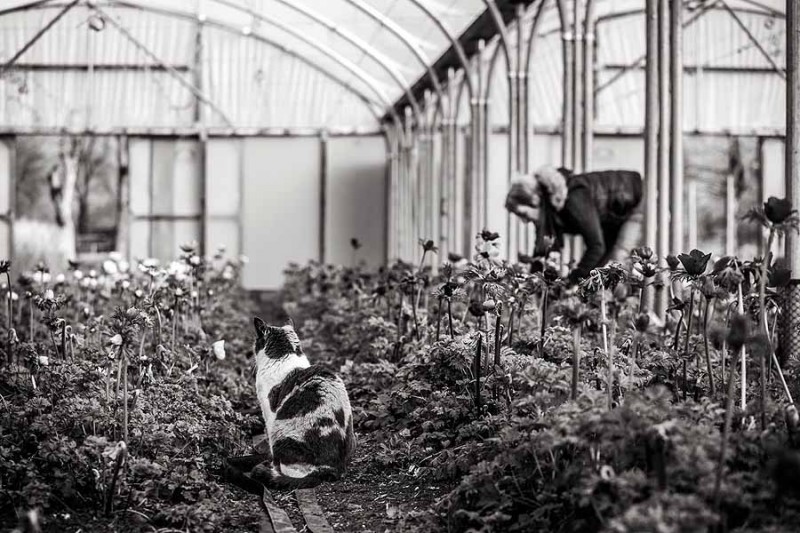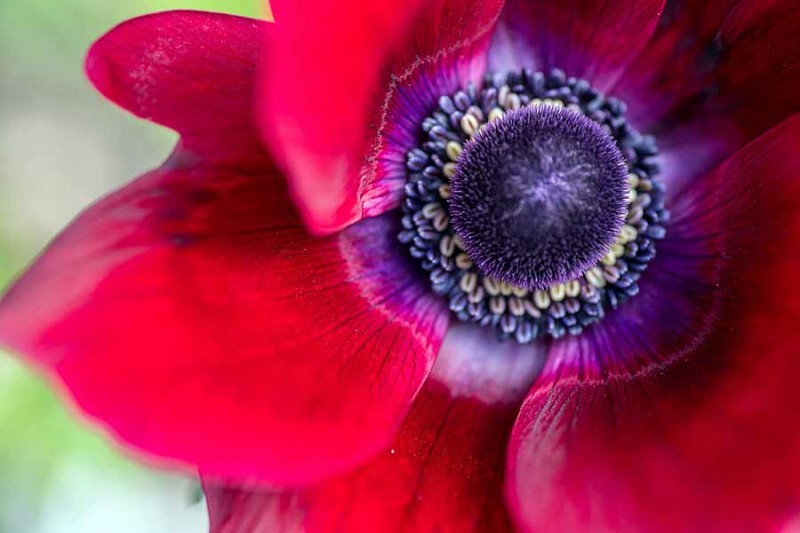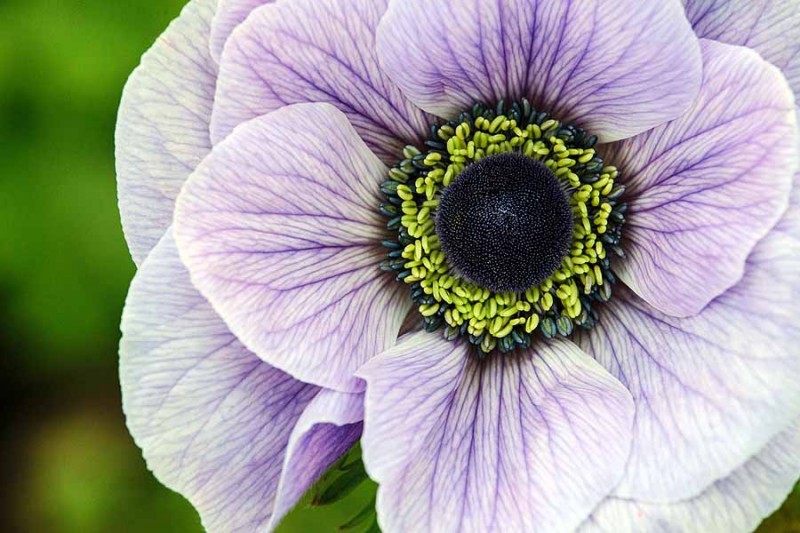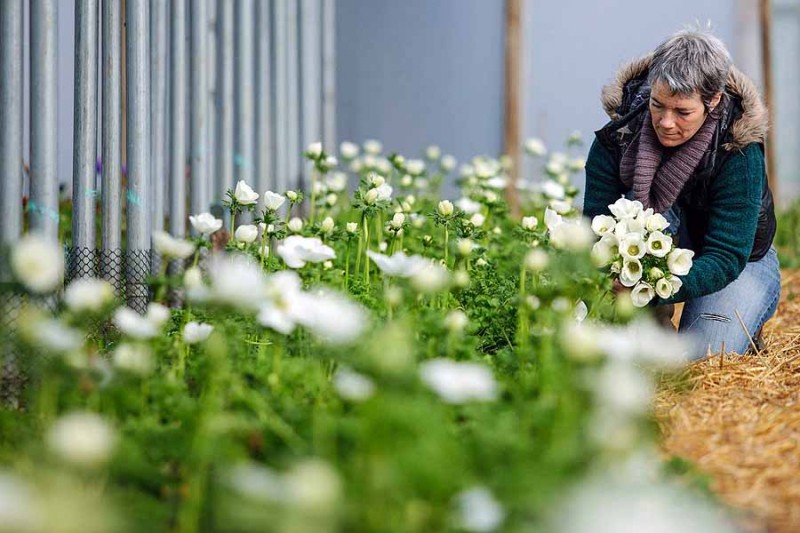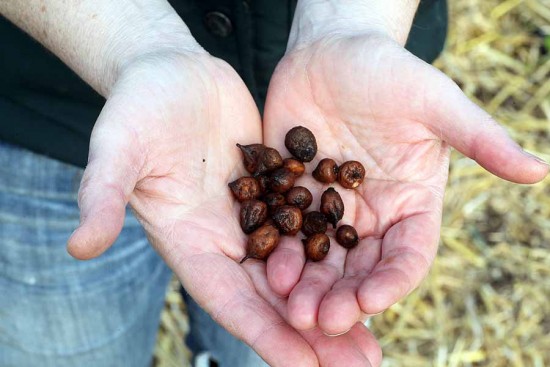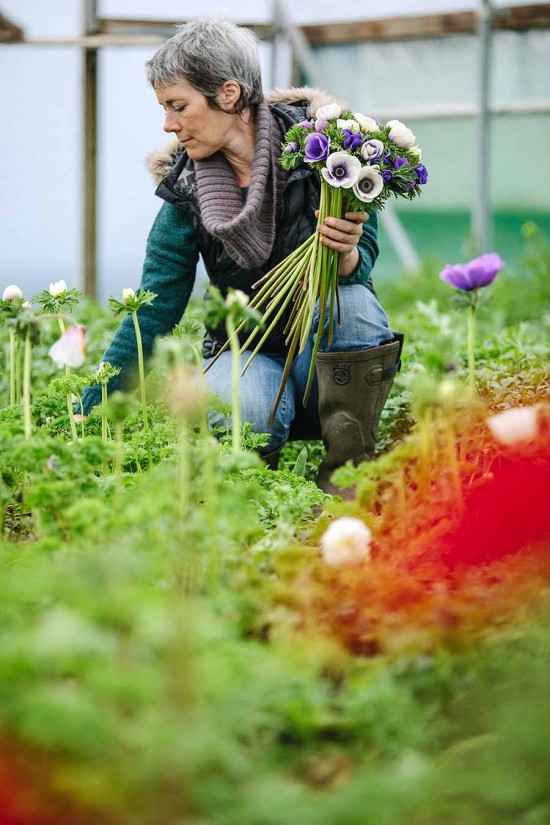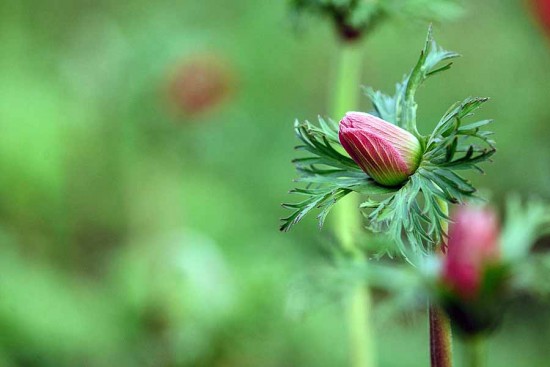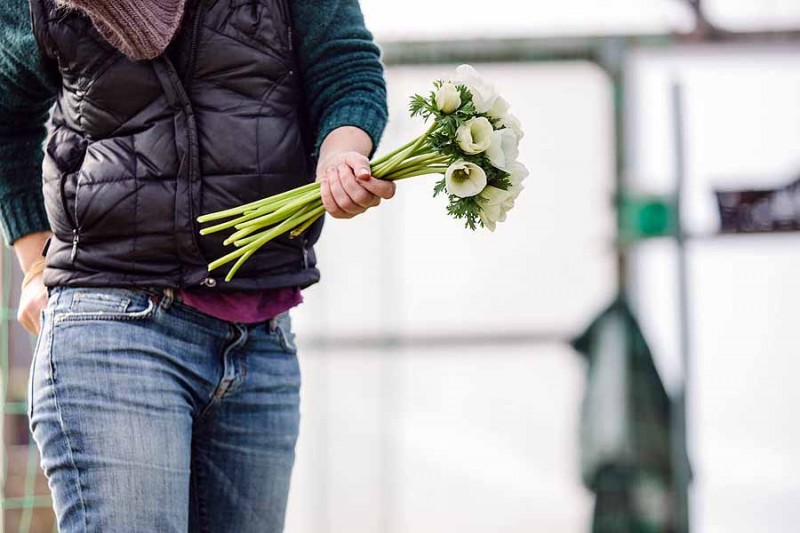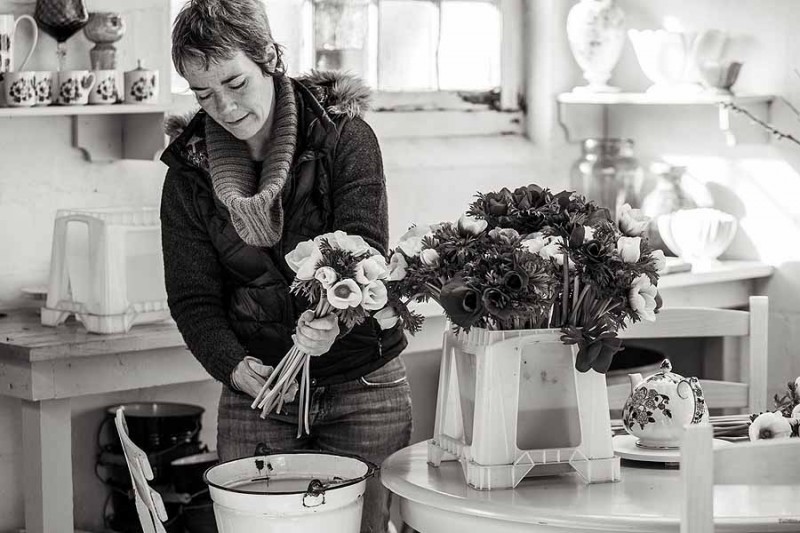I met Jo Rodwell last summer when she came to the farm with a lovely group of linen-clad ladies on a floral foray with Sarah Winward. After bonding over peachy-coloured roses and poultry I asked if she would like to collaborate on a workshop the following season. She said she would love to, so eight months later here she is again rolling up with a van full of blossom and stone urns.
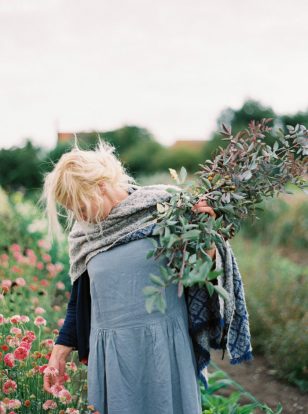
Jo is the mistress of painterly, wild and romantic urn arrangements and enjoys working on large scale designs. ‘Going big’ is often something people lack confidence in tackling so that seemed the perfect topic for the day. We had some old flowery friends come along to join us and some new ones only admired on Instagram before now.,,

We were able to spread out into a beautiful new teaching space for the day, a very old tithe barn soon filled with buckets of blossoming branches and wonderfully long-stemmed Ranunculus from Julie Clark at Hillcrest Nurseries.
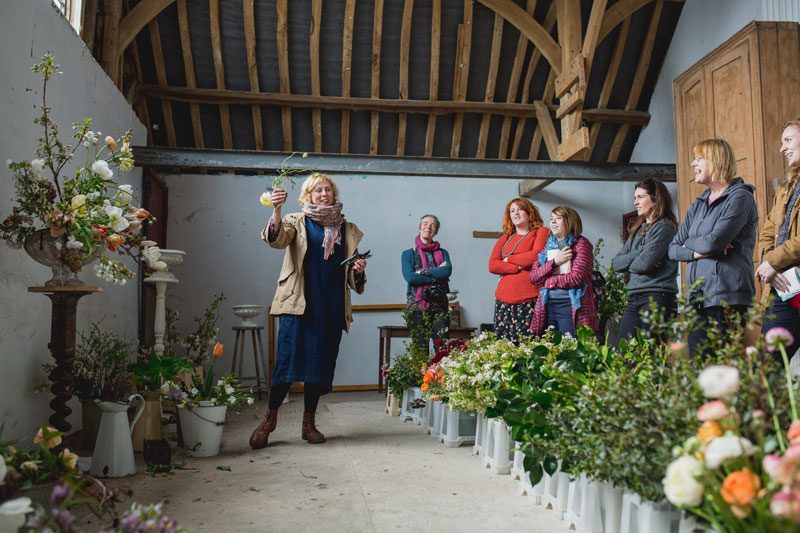
Of course I did not want to pick everything myself, because my contribution to the day was to let the attendees loose in the tunnels, field, hedgerow and orchard with a bucket and a pair of snips. I also kicked the day off with a tour of the farm and some tips on growing Spring cut flowers. After a chocolate chip cookie break (recipe courtesy of the fabulous Violet Bakery) we adjourned to the barn to watch Jo Flowers do her magic floral thing, bathed in a shaft of golden light. I love watching other people design with flowers, especially if they are really good, it is surprisingly therapeutic.
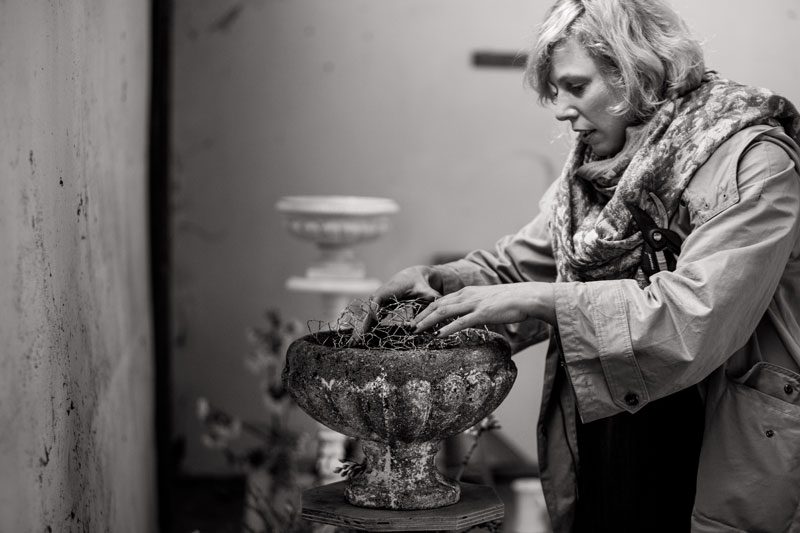
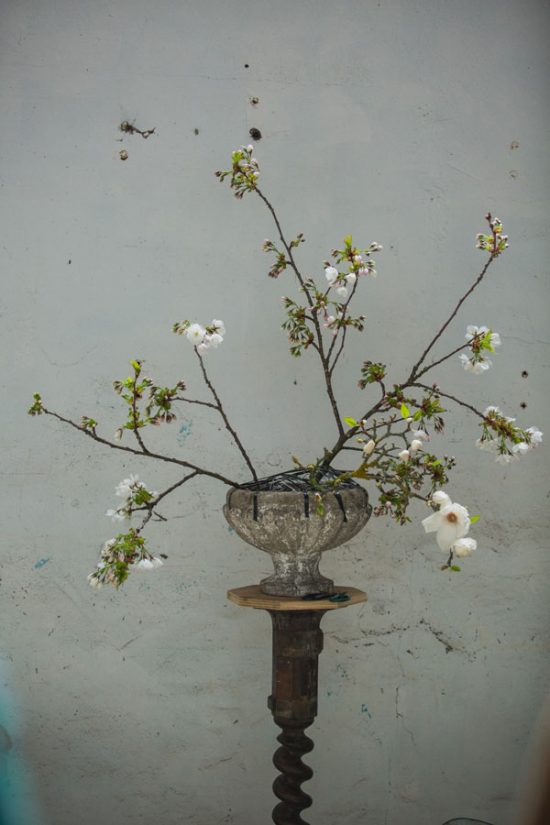
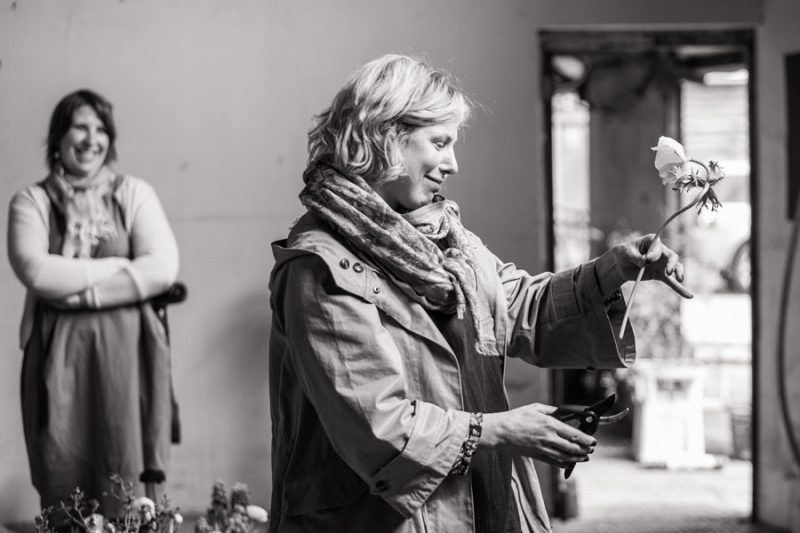
Jo worked at a thoughtful, considered pace which gave everyone the opportunity to ask questions about her philosophy and practice.
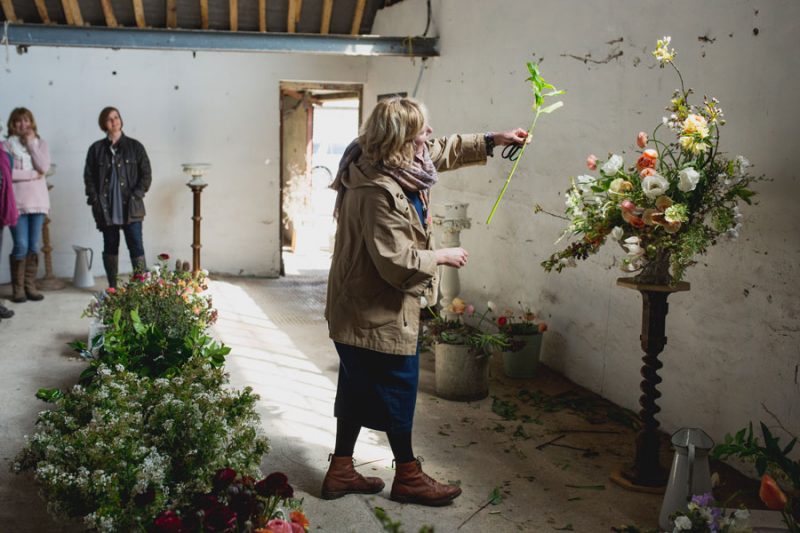
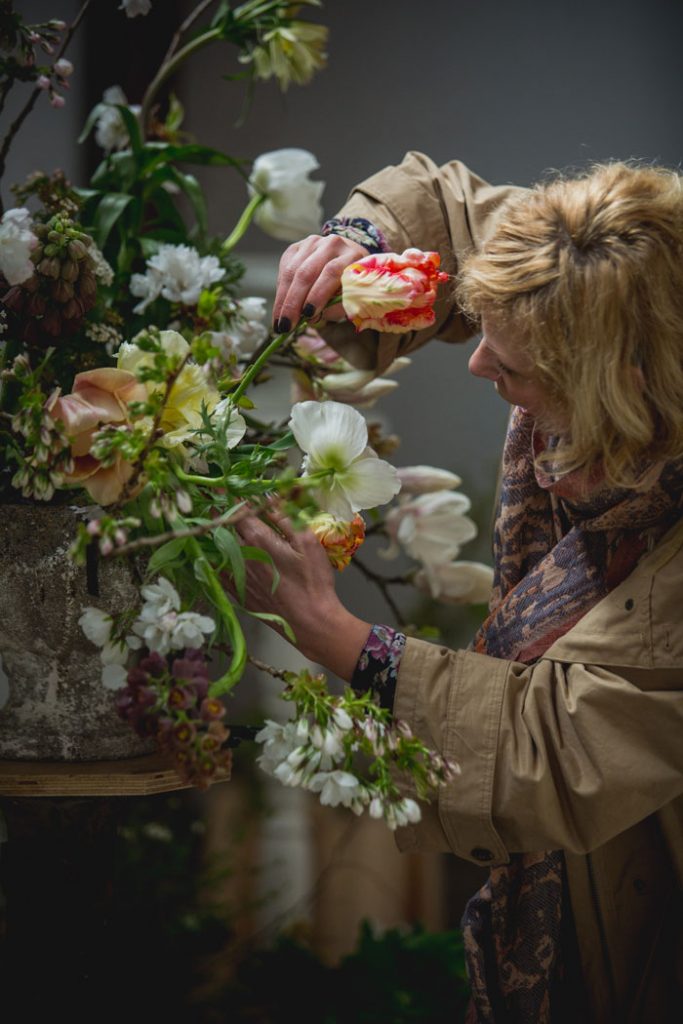
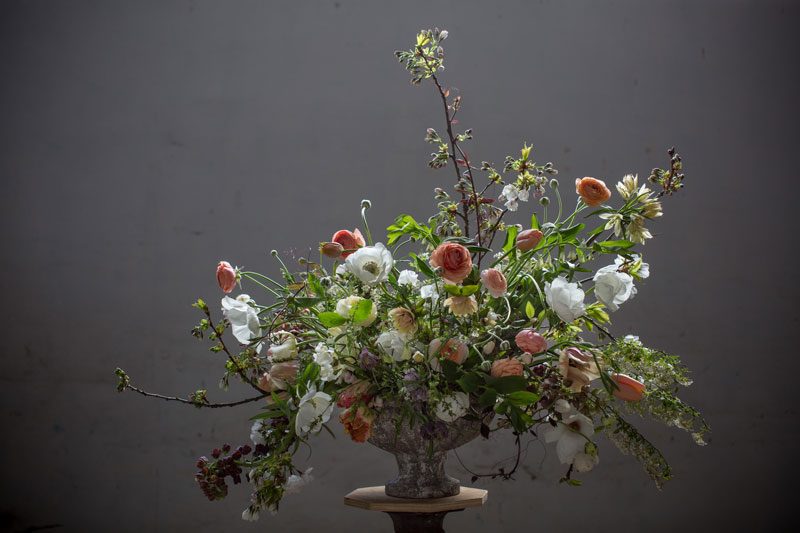
Then it was time for one of Ashley’s superb home cooked lunches – Spinach tart followed by Rhubarb Upside Down Pudding were enjoyed whilst sitting in the sunshine.
Fully fuelled, everyone was itching to get start picking, tulips were pulled from the tunnels and the pole lance came out in earnest to grab some choice branches of blossom.

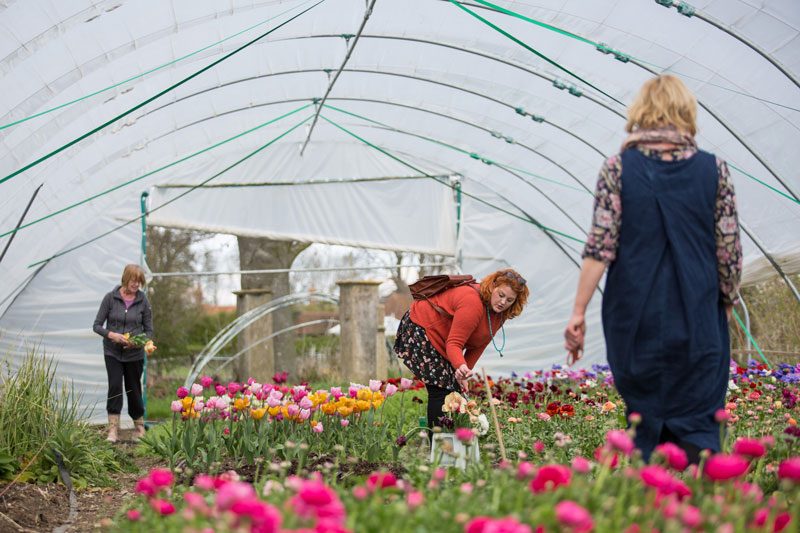
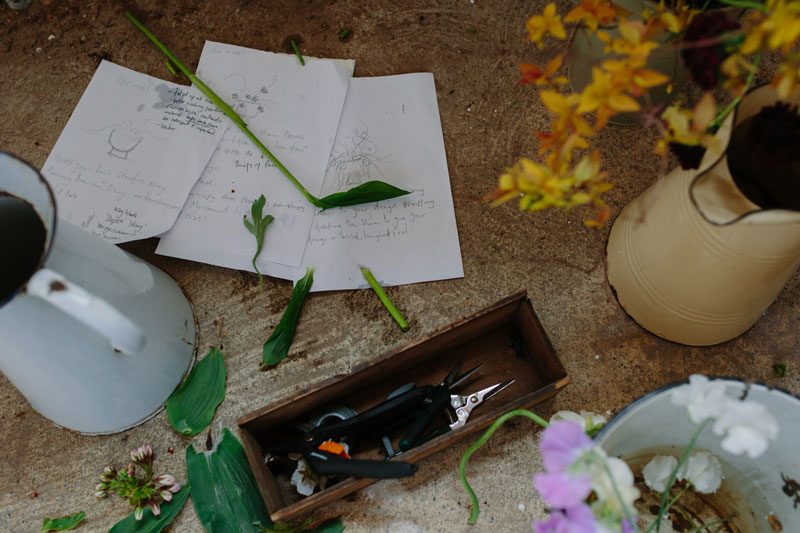
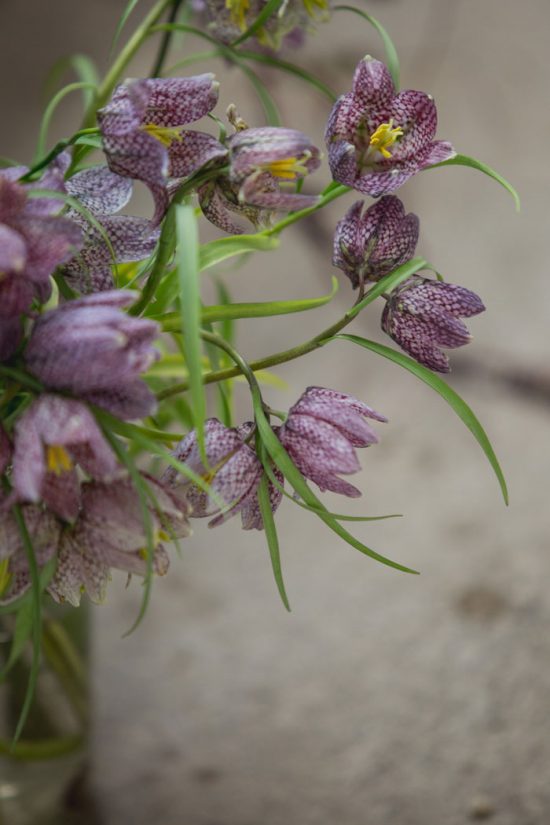
Here are some of the impressive arrangements made by everyone, it always amazes me how different the results can be when visitors use our flowers on any given day.
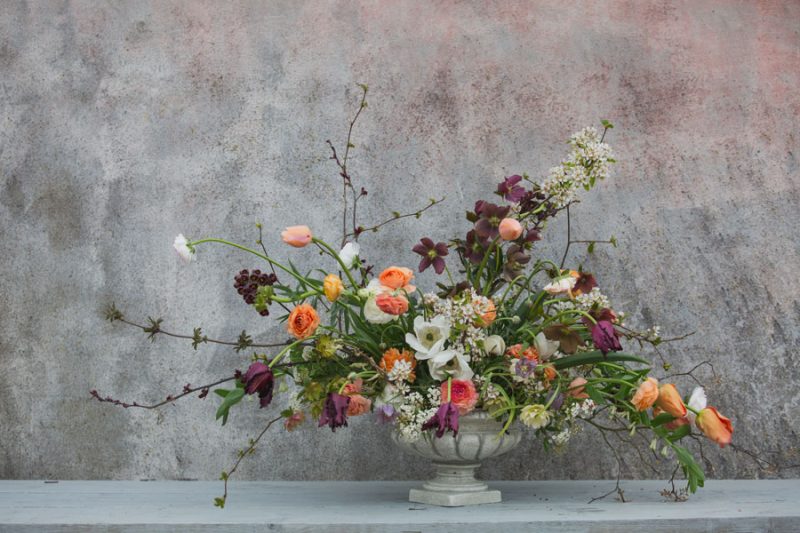
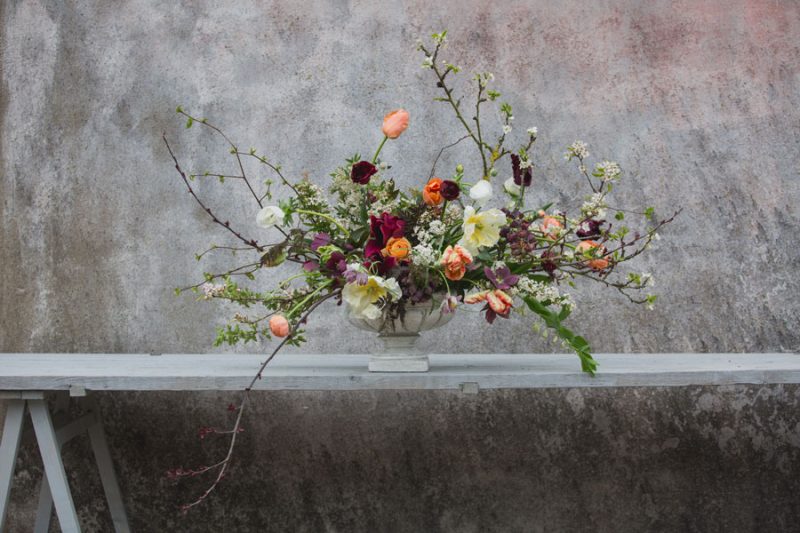
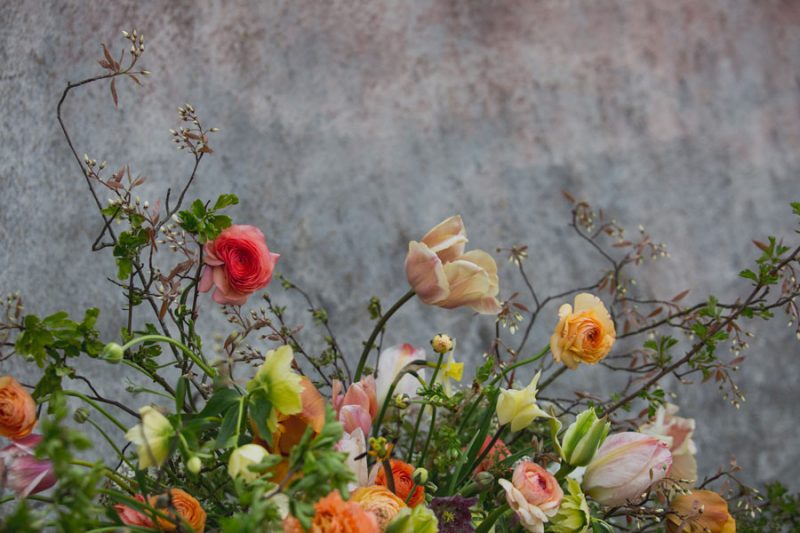
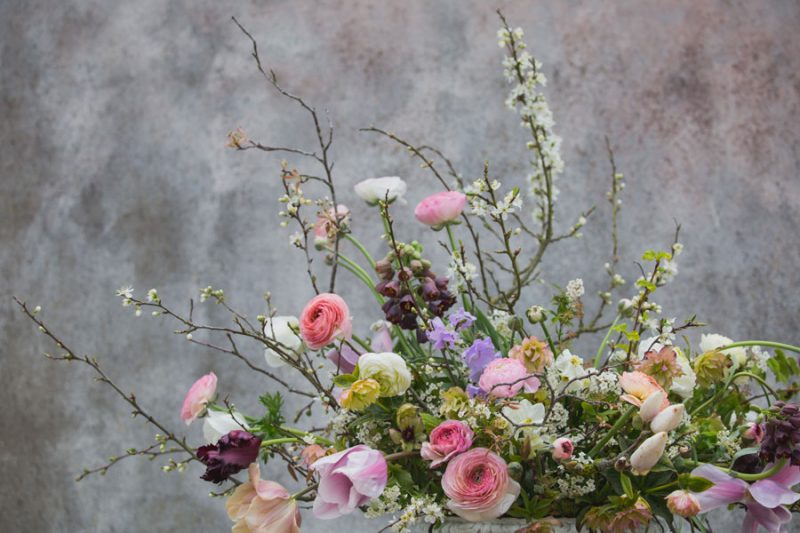
Huge thanks to Clare West for capturing a wonderful day and for everyone being such a fun group. You can find Jo Flowers’ blog here.
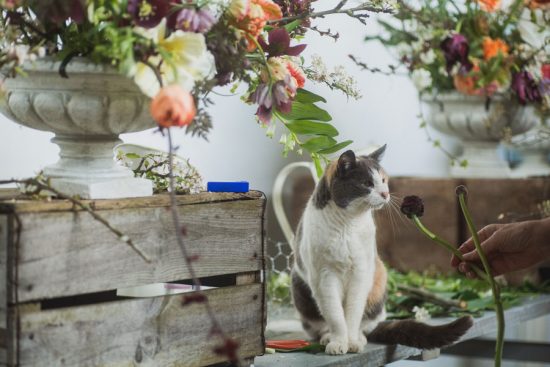
Rachel Siegfried

